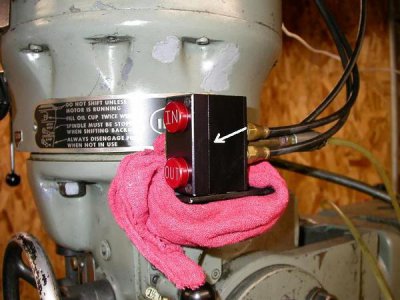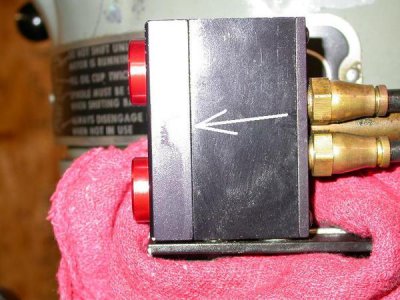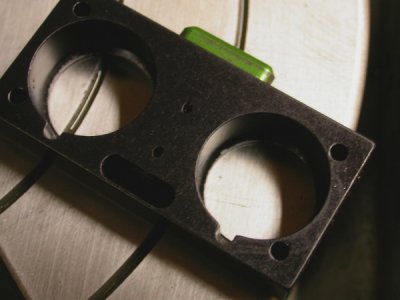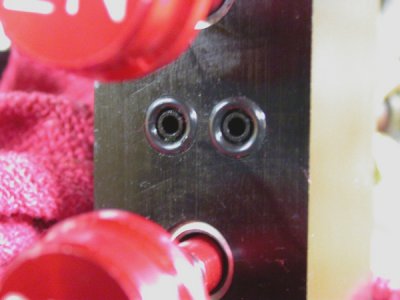- Joined
- Apr 6, 2011
- Messages
- 2,082
I'm not quite sure what I should try next.
The "IN/OUT" box was having an issue when it was under pressure. The air was seeping out at a good rate from where the arrow is pointed. The draw bar would still function but was not real responsive.
(The rag is around the base to catch the excess oil included with the "air" but I don't run it that way.)

The plate where the buttons come through is flat on the underside. There are two small (< 1/4") depressions in the face of the opposing block with holes in the center. There is an O-ring in each "depression" and the plate is tightened up on them to seal. As I was having problems with it and wasn't sure if the correct O-rings were being used, I ordered replacements straight from Kurt. I installed the "proper" O-rings and thought all was good. Upon firing up the compressor, to my horror, the rush of air out of the seam had doubled or tripled and now the draw bar does not even try to function.

I've tried a couple of different sizes of O-ring with little success so now I'm at a bit of a loss. The plate loose "flat" but it wouldn't take much warp in it to make a seal impossible. I'm thinking about taking the plate off and facing it with the mill but I'd like to get second opinions before I start cutting into anything.
Thanks,
-Ron
The "IN/OUT" box was having an issue when it was under pressure. The air was seeping out at a good rate from where the arrow is pointed. The draw bar would still function but was not real responsive.
(The rag is around the base to catch the excess oil included with the "air" but I don't run it that way.)

The plate where the buttons come through is flat on the underside. There are two small (< 1/4") depressions in the face of the opposing block with holes in the center. There is an O-ring in each "depression" and the plate is tightened up on them to seal. As I was having problems with it and wasn't sure if the correct O-rings were being used, I ordered replacements straight from Kurt. I installed the "proper" O-rings and thought all was good. Upon firing up the compressor, to my horror, the rush of air out of the seam had doubled or tripled and now the draw bar does not even try to function.

I've tried a couple of different sizes of O-ring with little success so now I'm at a bit of a loss. The plate loose "flat" but it wouldn't take much warp in it to make a seal impossible. I'm thinking about taking the plate off and facing it with the mill but I'd like to get second opinions before I start cutting into anything.
Thanks,
-Ron




